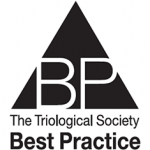 TRIO Best Practice articles are brief, structured reviews designed to provide the busy clinician with a handy outline and reference for day-to-day clinical decision making. The ENTtoday summaries below include the Background and Best Practice sections of the original article. To view the complete Laryngoscope articles free of charge, visit Laryngoscope.
TRIO Best Practice articles are brief, structured reviews designed to provide the busy clinician with a handy outline and reference for day-to-day clinical decision making. The ENTtoday summaries below include the Background and Best Practice sections of the original article. To view the complete Laryngoscope articles free of charge, visit Laryngoscope.
Background
Pediatric obstructive sleep apnea (OSA) is a common condition, affecting up to 1% to 4% of children under 8 years old. Adenotonsillectomy (AT) is currently the first-line treatment for patients with significant or symptomatic OSA, adenotonsillar hypertrophy, and no contraindication to surgery. Unfortunately, 17% to 75% of patients may continue to experience clinically significant sleep-disordered breathing symptoms, with the highest risk seen in patients with neuromuscular disorders, trisomy 21, craniofacial abnormalities, or obesity. Whereas those with mild recalcitrant disease and symptomatology may potentially be treated with observation and/or medical therapy, the authors examine the optimal management of those with persistent moderate or greater OSA. This review evaluates the current evidence for continuous positive airway pressure (CPAP)-intolerant refractory pediatric sleep apnea following AT, focusing on workup and subsequent management.
Best Practice
Patients with CPAP-intolerant refractory sleep apnea confirmed by polysomnography should be offered a drug-induced sleep endoscopy (DISE) with the potential for directed surgery. Alternatively, diagnostic sedated cine MRI may be considered, but unlike DISE, it may not allow for intervention under the same sedation anesthetic.